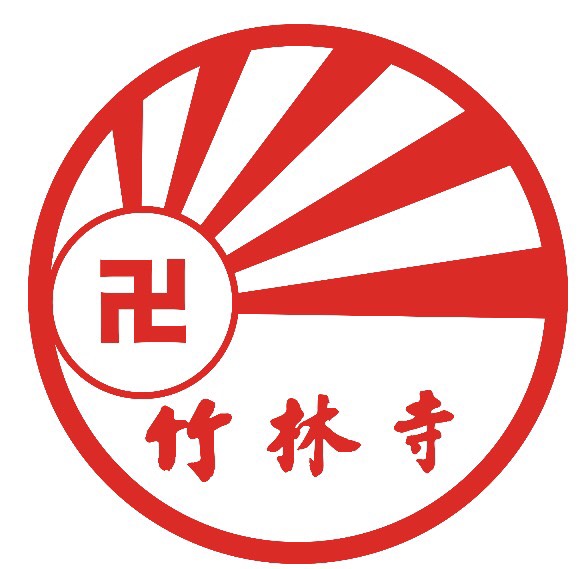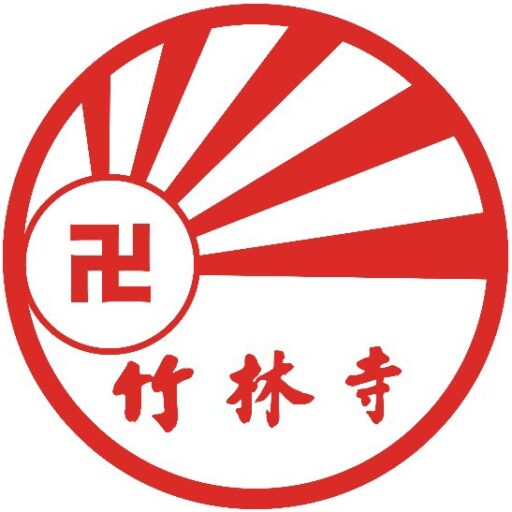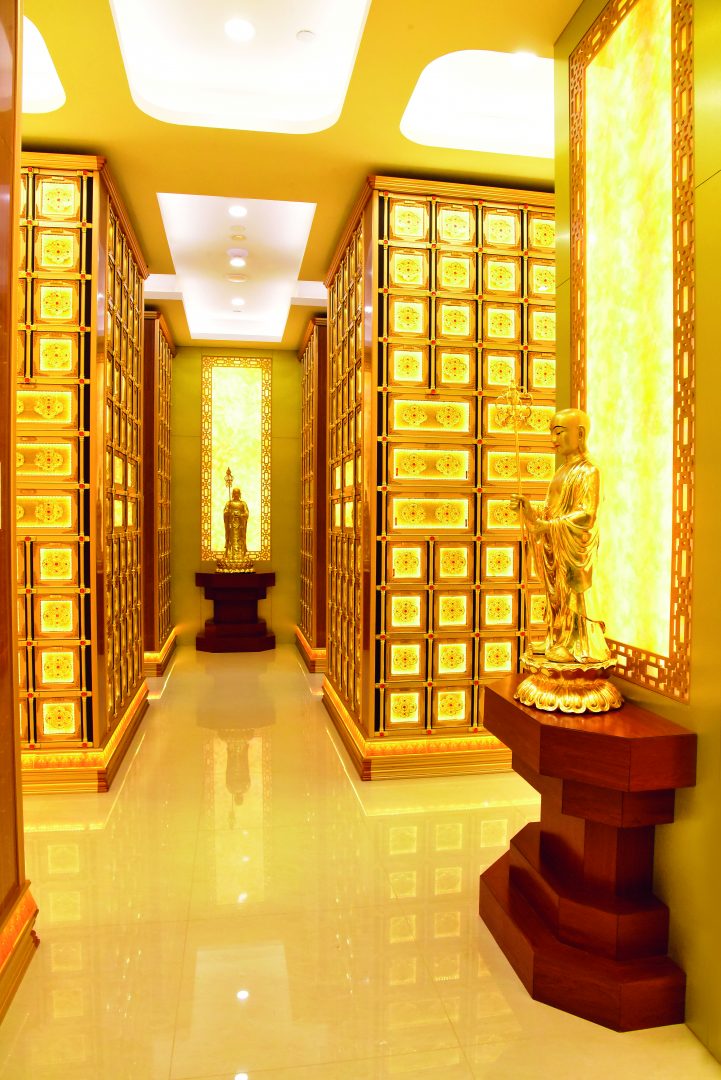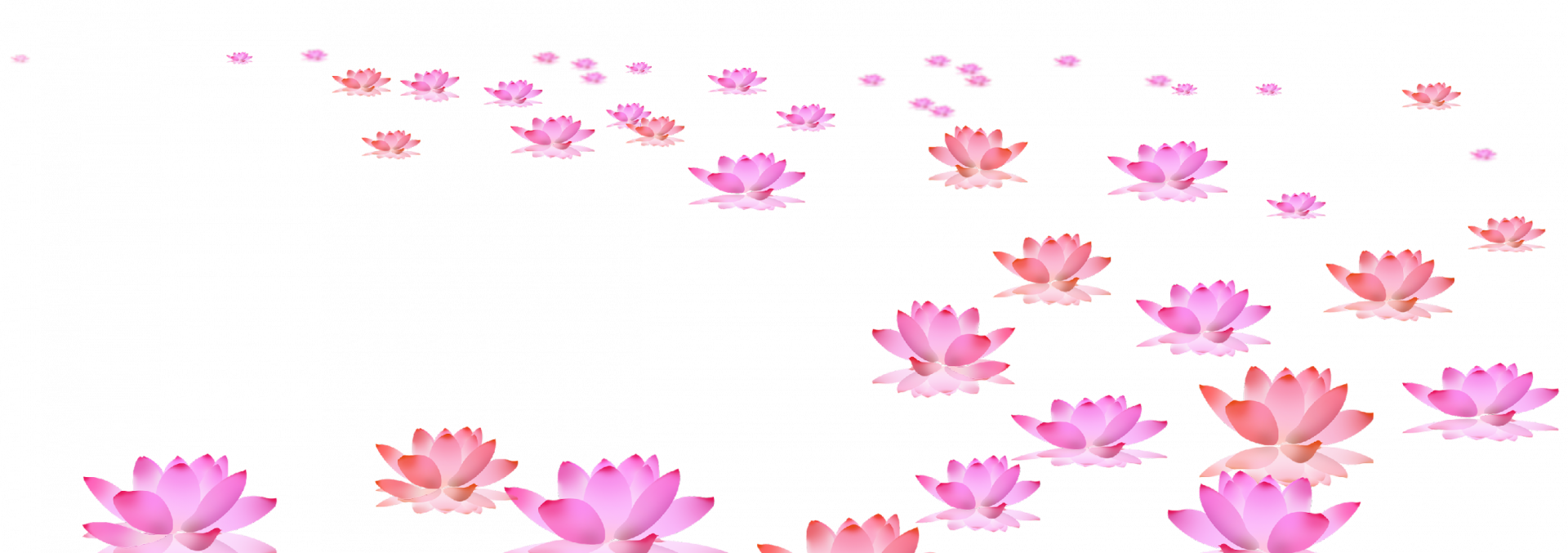

Characteristics of the Reconstructed Zulin Temple 竹林寺重建建筑特色

Level 1: The Hall of Perfection
一楼圆通宝殿
The stories of the immortals visiting Guan Yin is related to
1) the mind that aspires for enlightenment,
2) the most excellent bodhi mind and
3) samadhi bodhi mind.
Guan Shi Yin Bodhisattva has immeasurable forms and is able to respond to prayers everywhere. She is a manifestation of the bodhi mind of the Buddhas and bodhisattvas and their vows to attain enlightenment and save sentient beings.
Manjusri embodies the most excellent bodhi mind. He puts an end to inferior teachings and manifests the most excellent parts of the exoteric teachings. This is what is meant by most excellent teachings.
Samanthabhadra embodies the mind of bodhi in samadhi. This means to view all sentient beings with equal vision.
These three bodhisattvas represent great compassion, great wisdom and great concentration.
诸仙、罗汉朝观音的故事与盖三昧耶戒,以此三种之菩提心为自体也:1)行愿菩提心,2)胜义菩提心,3)三摩地菩提心。
观音菩萨化身无数,千处祈求千处现,度一切众生发菩提心。观世音菩萨,是佛菩萨之菩提心所化现,发菩提心,上求佛道,下度众生的誓愿。
《观音》行愿菩提心,修行发愿,故名行愿,愿者念一切众生,悉含如来藏性,堪安住于无上菩提,愿以大乘微妙之法悉度之也,行者,为此修四弘度之行也。
《文殊》胜义菩提心,止息劣法,观显胜义,故云胜义,此有教观之二门,凡观夫外道二乘法相三论天台华严之九种住心,次第舍劣取胜,终安住于究竟之秘密庄严心,是教门之胜义也。又观诸法觉悟其无自性,则止除一切之妄惑自真起用,万德斯具,是观门之胜义也。如是一就所住之教而云胜义,一就所显之理而云胜义也。
《普贤》三摩地菩提心,三摩地又云三昧耶,三摩译为等至,新译曰等念,三摩耶于金刚顶义诀译为等持,是行者入于信解地而修三密相应之五部秘观,等持诸佛自行化他之万德,故名等持,遍入有情界,平等摄受而护念之,故名等念,无所不至故曰等至。
此三者即大悲(行愿)、大智(胜义)、大定(三摩地)之三德,又莲(行愿)、金(胜义)、胎藏界(大定)之三部,又表德(行愿)、遮情(胜义)、不二(三摩地)也。菩提心论曰:“求菩提者,发菩提心修菩提行。既发如是菩提心已,须知菩提心之行相。其行相者,三门分别,诸佛菩萨,昔在因位发是心已,行愿胜义三摩地为戒,乃至成佛无时暂妄。”
Seven represents the perfection of Dharma. It represents East, South, West, North, Up, Below, Center. Such is perfection. The number also represents abundance and victory. The number seven is often found in Buddhism and is considered an auspicious number.
“七”是表法的,代表圆满。
“七”是东、南、西、北、上、下、中央,这就是圆满。
大、多、胜的意思!因此,佛教元素中常见“七”这个吉祥数字。
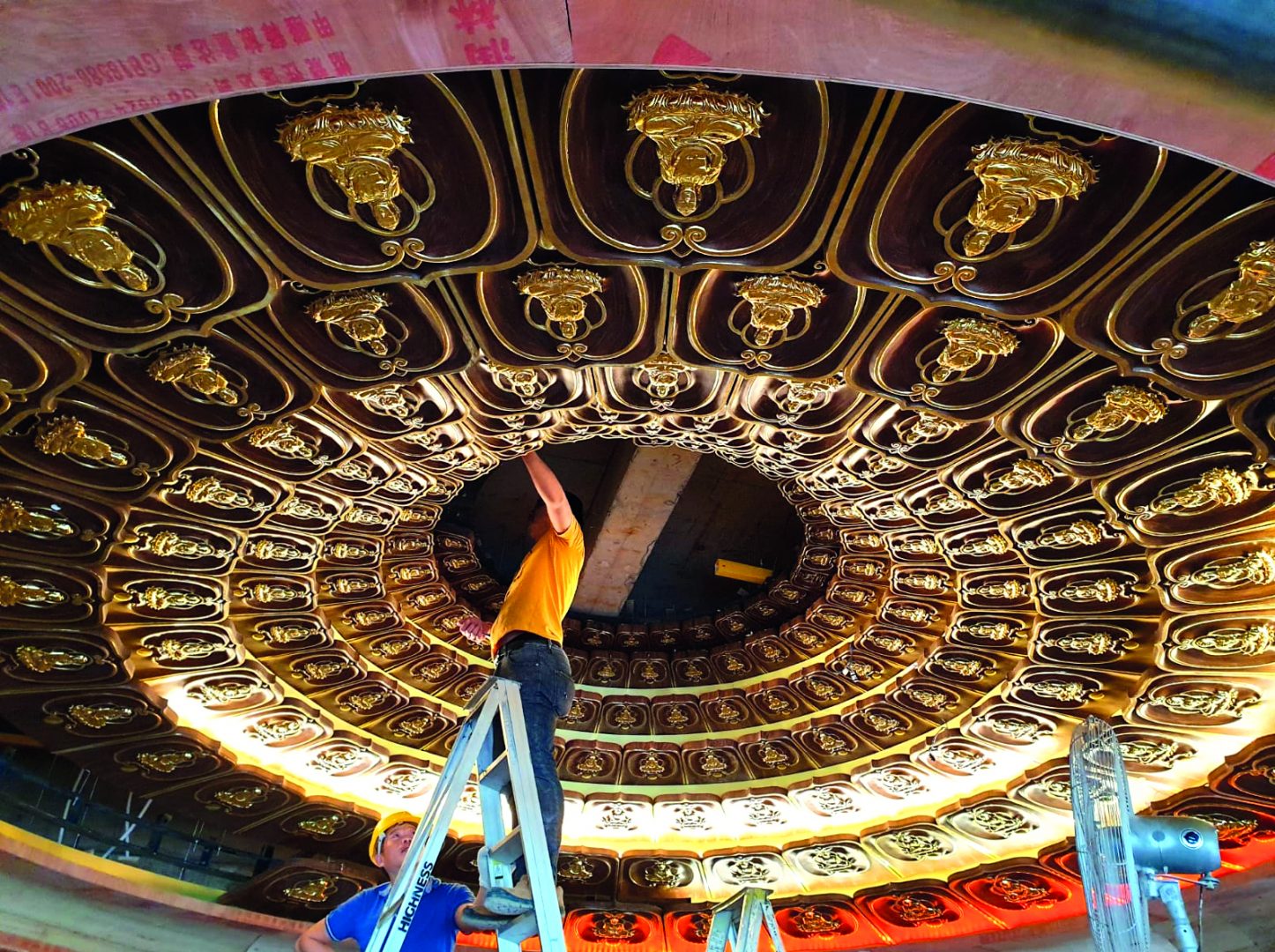
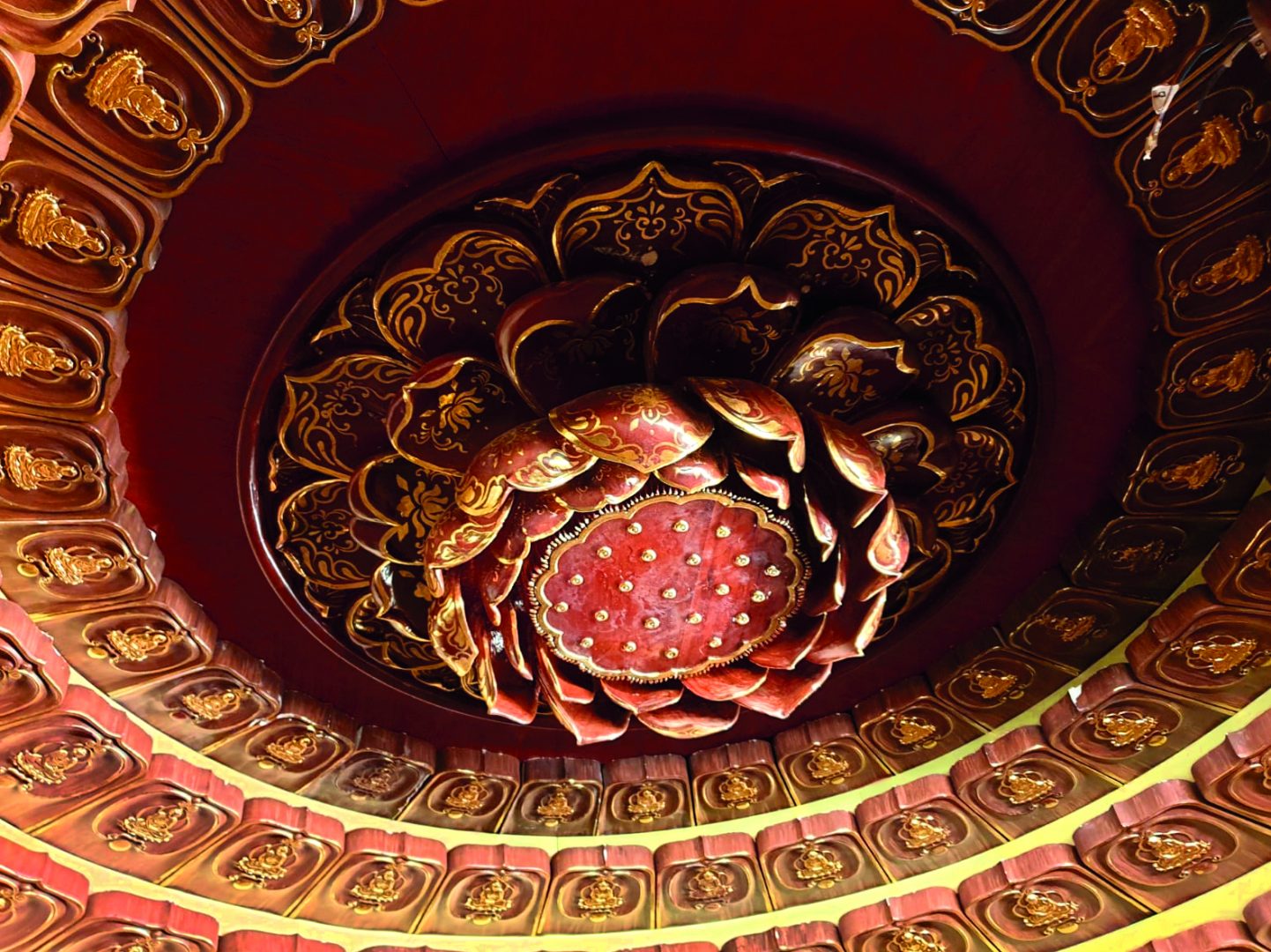
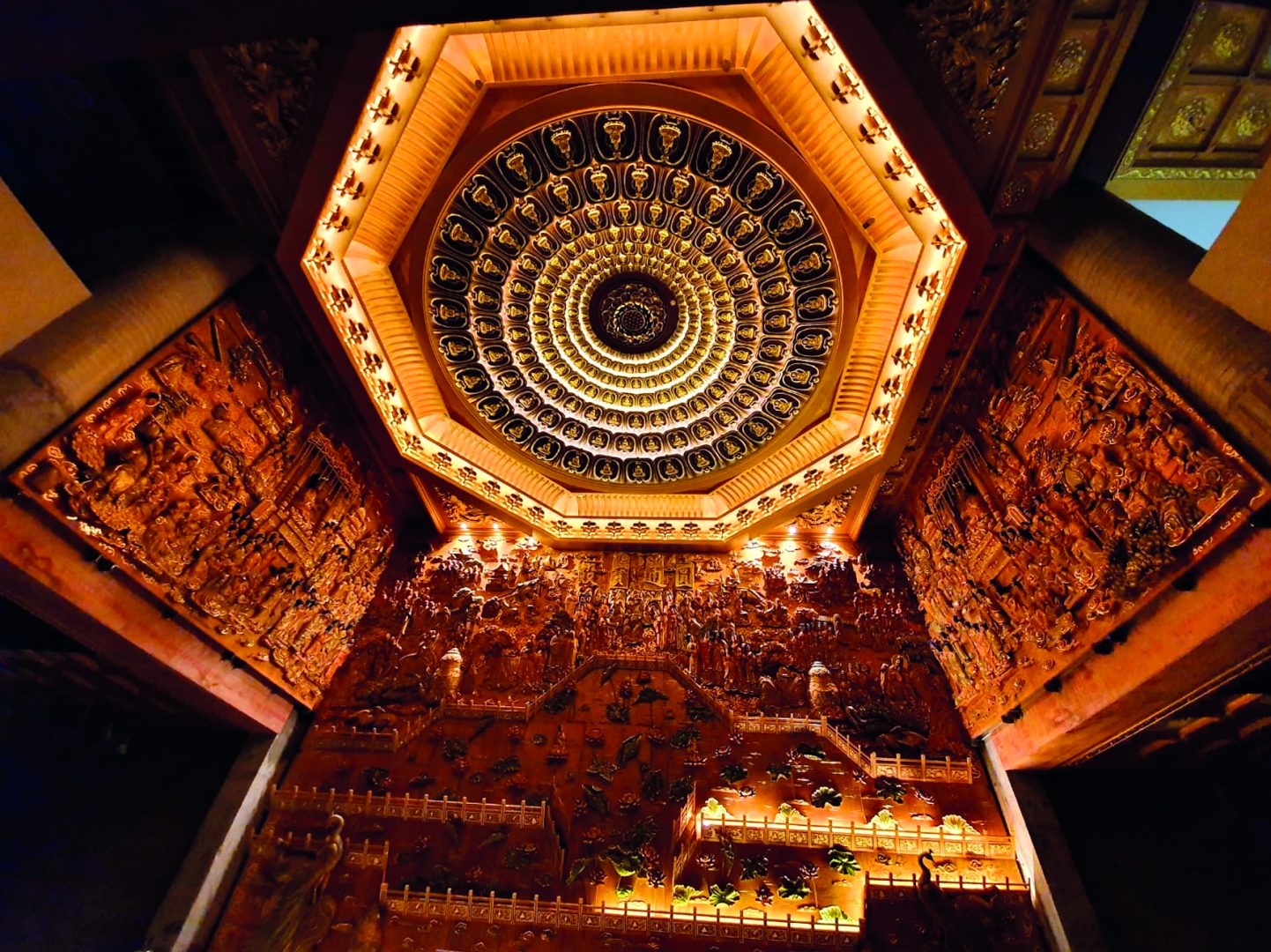
There are seven circular patterns on the flower of the ceiling in the Hall of Perfection. Each circle has 28 lotus petals and there are placed in the four directions.
They represent:
Seven dharmas: Earth, water, fire, wind, emptiness, views, consciousness
Seven sufferings: Birth, old age, sickness, death, meeting those who one hates, being separated from those that one loves and coveting for one cannot have.
Seven deluded views: evil views, egotism, eternalism, nihilism, the view the moral practices of non-Buddhist sects can lead to enlightenment, the view that austerities can lead to enlightenment and suspicion [of the Dharma].
Seven holy treasures: Faith, precepts, regret [of mistakes], shame [of shortcomings], hearing [Dharma], charity and wisdom.
Seven factors of awakening: Contemplation, discernment of Dharma, diligence, joy, relaxation, meditation, equanimity
Seven purities: Purity in precepts, purity of mind, purity of views, purity of being free from doubts, purity of being certain which is the Dharma path and which is not the Dharma path, the purity of wisdom in spiritual practice and the purity of wise view.
Seven Buddhas: Vipassī, Sikhī, Vessabhū, Kakusandha, Koṇāgamana, Kassapa and Gautama.
一楼圆通宝殿莲花穹顶分为7圈,
每圈28个莲花瓣,每圈四个方位各7个。
• 七法:地、水、火、风、空、见、识
• 七苦:生、老、病、死、怨憎会、爱别离、 求不得
• 七妄见:邪见、我见、常见、断见、戒盗见、果盗见、疑见
• 七圣财:信、戒、惭、愧、闻、施、慧
• 七觉支:念丶择法丶精进丶喜丶轻安丶定丶舍
• 七清净:戒清净、心清净、见清净、度疑清净、 道非道清净、行道智见清净、智见清净
• 七佛 :毗婆尸佛、尸弃佛、毗舍婆佛、拘楼孙佛、拘 那含牟尼佛、迦叶佛以、乔达摩(释迦牟尼佛)
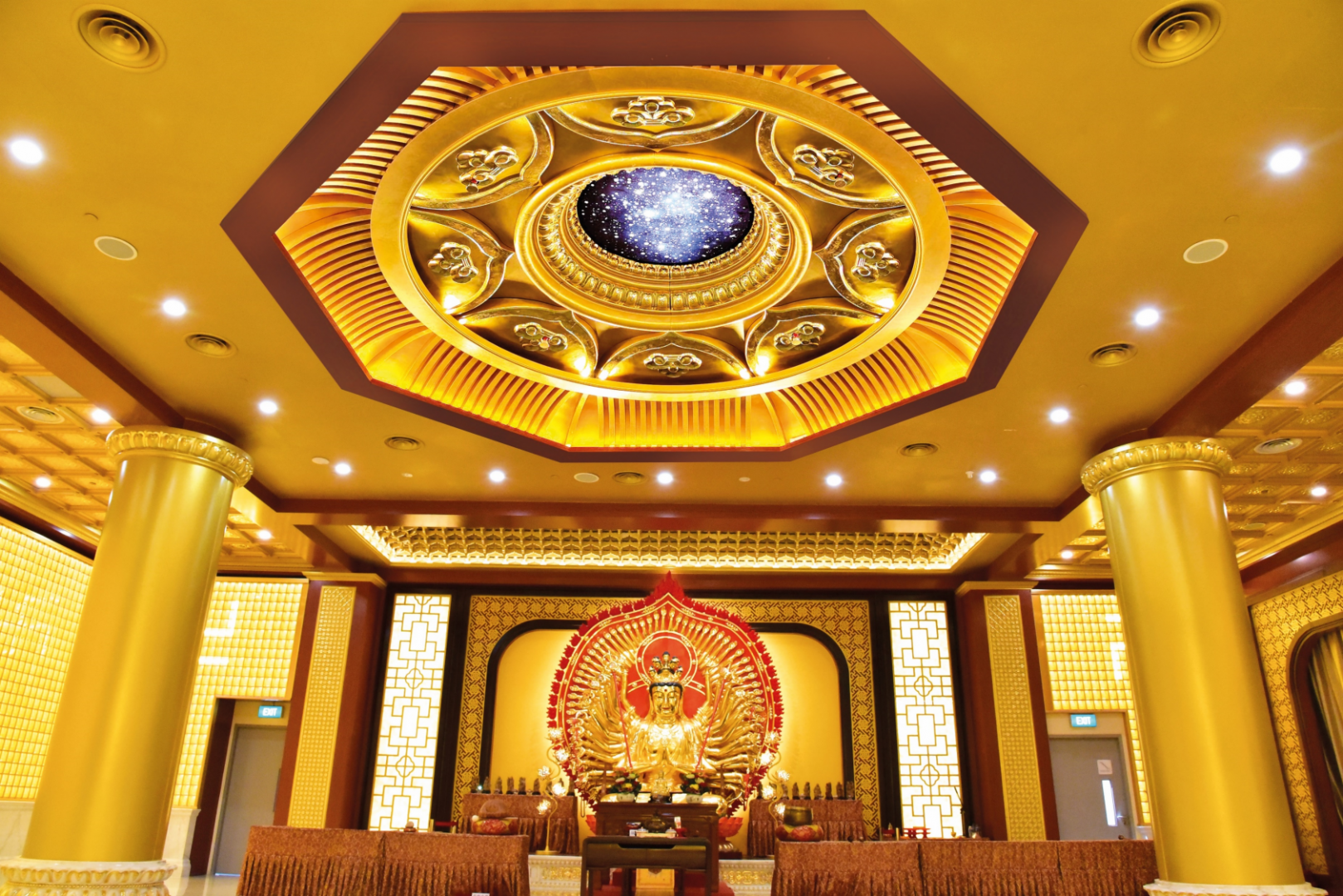
Basement
地下一层地宫
A bold innovation and a creation of a high-quality image that is synonymous the culture of filial piety. Other than being an ideal resting place for the deceased, it is also a cultural attraction. It inculcates a public mindset that the basement of Zulin temple is the flower of the soul and a hall where the Buddhas will bless you and your descendants.
To propagate Dharma and at the same time to encourage filial piety. To let the living be at peace and the deceased to attain the Pure Land.
The layout is reasonable and the space is expansive. The interior is fully utilised and the directions are clearly navigable. It facilitates the monastics for their Dharma activities such as chanting sutras and providing offerings for the ancestors.
There are three main areas: The Lecture Theatre of Perfection, The Hall of Merit and the Hall of Peaceful Repose.
There is a Thousand Armed and Thousand Eyed Guanshiyin Bodhisattva in the Lecture Theatre of Perfection which is made of pure copper gold plate. There are also blessing lamps.
大胆突破创新,造就优质品牌形象。与孝道紧密相连,体现传统孝道文化,不仅仅是一处让逝者安息的理想家园,更是一方具有浓厚文化气息的人文景观,在百姓心中种下“竹林寺地宫是灵魂的花园与殿堂,佛法护佑,福延子孙”的理念。
在弘扬佛教文化的同时,也传承孝道文化。让生者平安吉祥,逝者早登极乐。
整体空间布局合理,活动区域宽敞。内部区域充分利用空间,将利用率发挥到极致。路线清晰顺畅, 充分体现法师诵经超度,香火供奉,祭祀活动等便利。
地下一层功能划分三大区域:圆通讲堂,功德堂,安养堂。
圆通讲堂供奉着纯铜镀金千手千眼观世音菩萨,殿堂边侧供有福灯。

Hall of Merit – 功德堂
The Hall of Merit is filled with golden light which symbolises everlasting remembrance. There are circular representations of the sun and the moon. The golden Dharma wheel represents the light of Buddhism blessing the ancestors. This visual display is visually irresistible. The Hall also enshrines Ksitigarbha Bodhisattva and around 8,000 ancestral tablets.
金色之光, 日不落的思念
走进功德堂,圆圈的造型吊顶如太阳照耀般明亮光辉,映射着金色法轮,有如佛光庇护着先人,是本堂的一大亮点,令人忍不住驻足观赏。功德堂供奉着地藏王菩萨,同时也为往生者提供约8000多个祖先牌位。
The Hall of Peaceful Repose 安养堂

Entering the Hall of Peaceful Repose,
one can see an elegant statue of Amitabha Buddha and a canopy with sunflower designs. The sunflower represents the joyful sun. It also represents nostalgia and remembrance of the deceased. The Hall accommodates 5,000 niches and is divided into four categories.
心之所向,日日思念
走进安养堂,映入眼帘即是典雅的阿弥陀佛空间及“向日葵”天棚。
向日葵中的“向日”代表着两个意义,其一是朝着阳光,象征具有太阳般明朗、快乐的心。另一意义则是往日、昔日的意思,代表着对逝者的思念。
安养堂供奉阿弥陀佛,提供5000位纳骨柜,分为四个等级。
